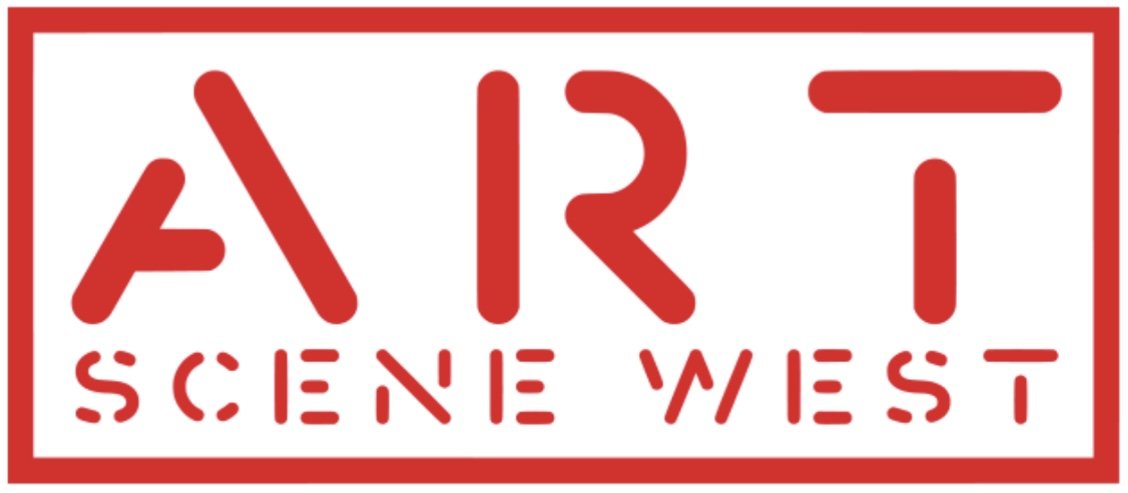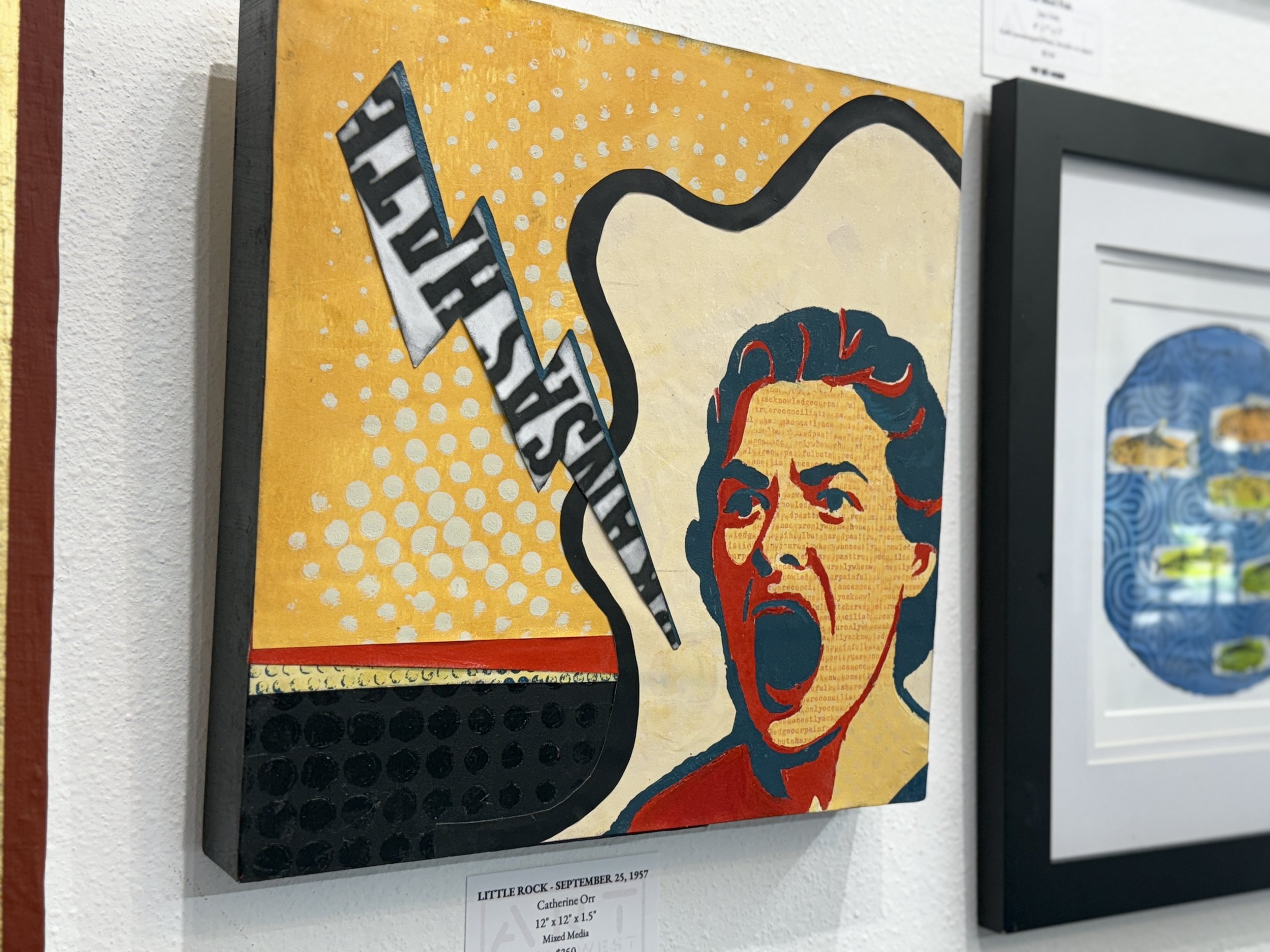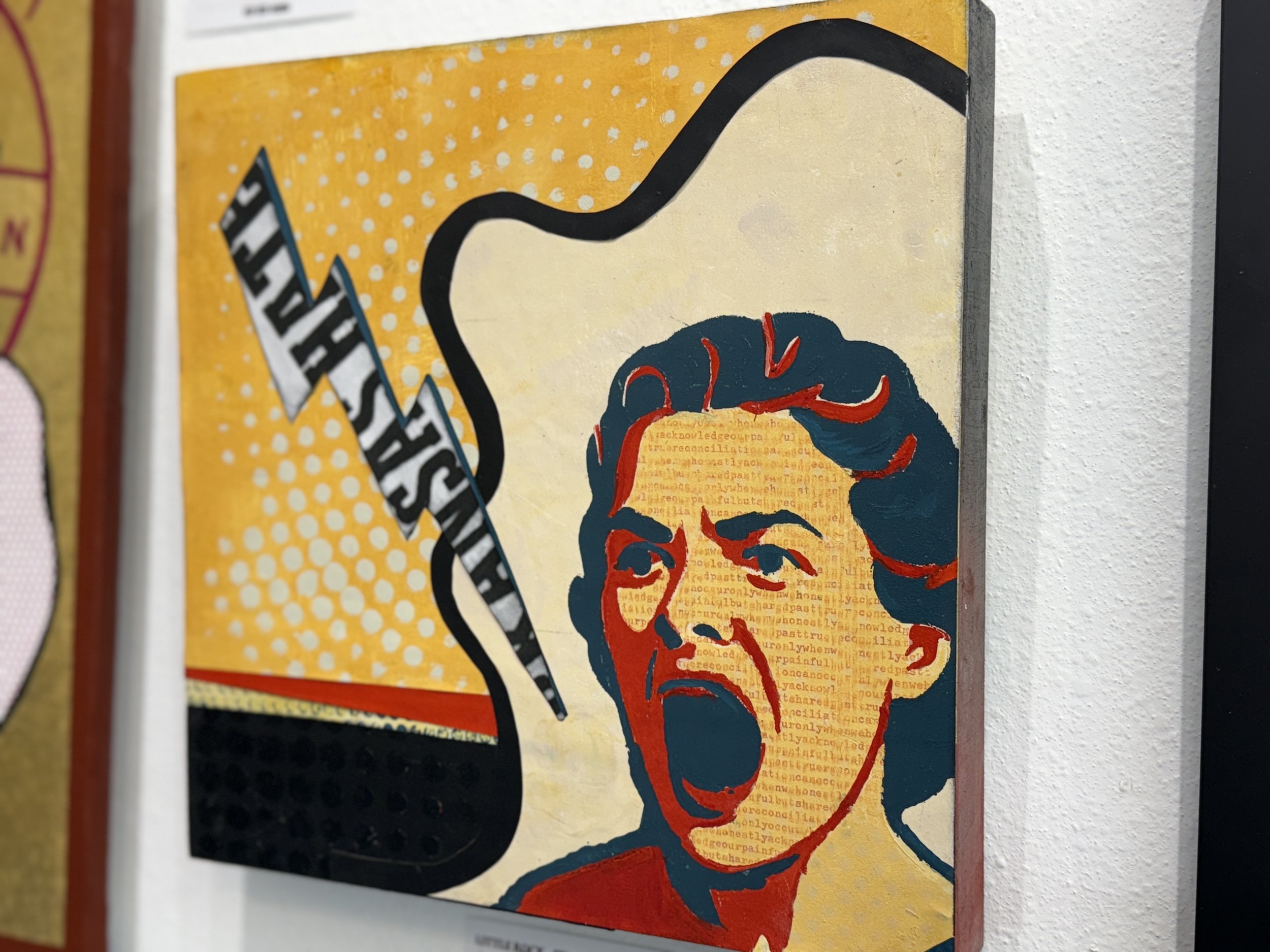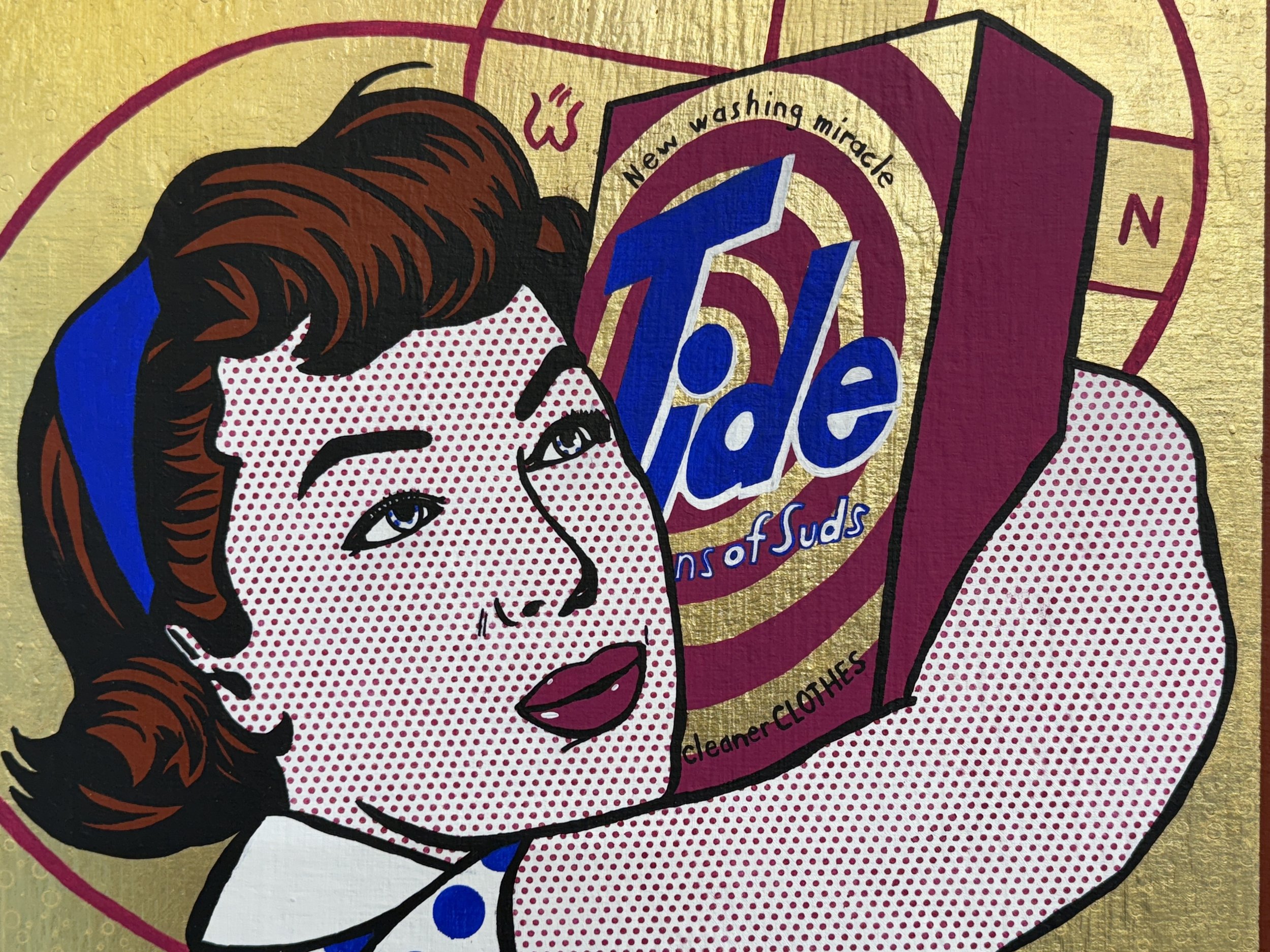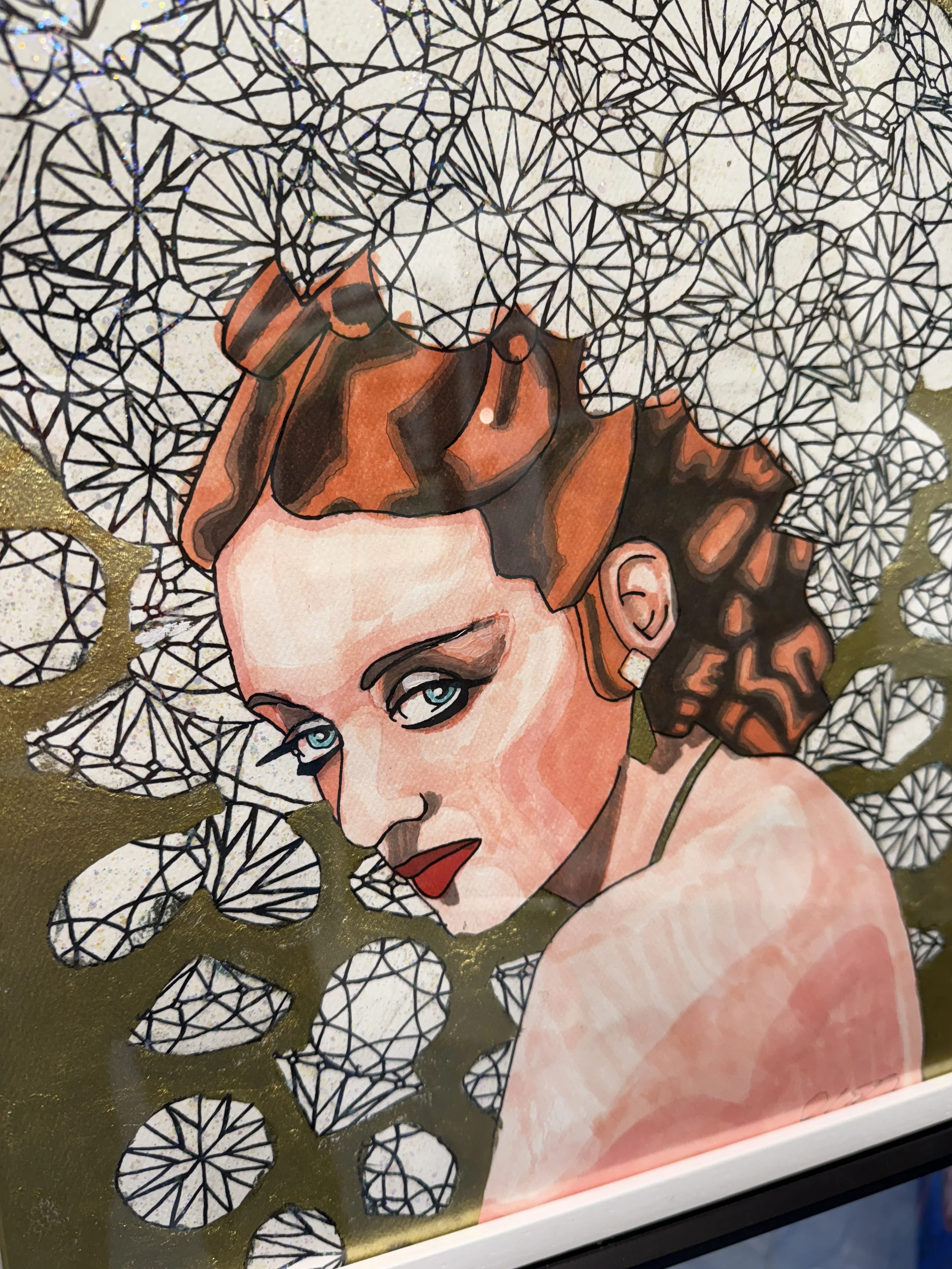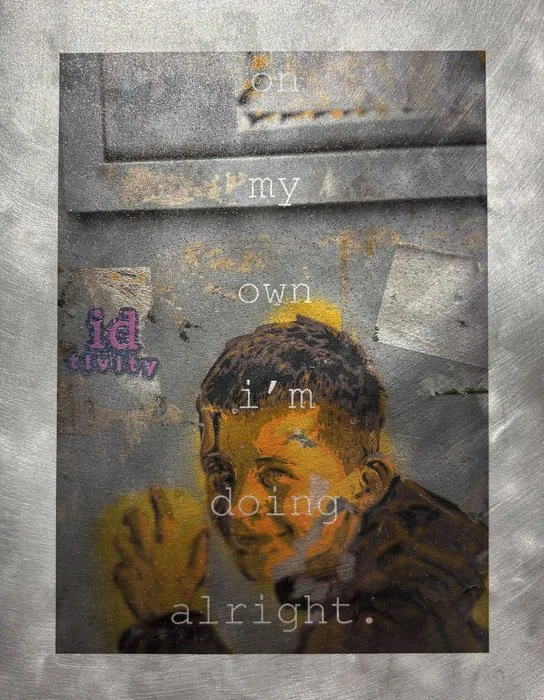Catherine is a visual artist and Professor Emerita of Critical Identity Studies at Beloit College (Wisconsin), whose teaching and scholarship focused on the politics of identity formation throughout US histories of colonization, enslavement, and state-sponsored dispossession–along with the various forms of social activism and decolonizing gestures that resisted them. Throughout her academic career, which included teaching, research, administration, and consulting on equity-centered innovation in higher education, she pursued visual arts mostly as an avocation.
Upon her early retirement in 2021, Catherine embarked on an intensive period of exploration in visual arts media, translating her scholarly insights into a new pictorial language. Her artist books and mixed media pieces depict how cultural and personal ephemera are used to mask or reveal truths about the historical contradictions embedded in the violences of whiteness as an ongoing racial project in the United States–a project in which she herself is implicated. This new artistic trajectory enables Catherine to communicate with audiences beyond the academy, drawing on her decades of intellectual labor and personal investment in social and cultural transformation. Her art seeks to challenge viewers to rethink our collective attachments to narratives of progress, exceptionalism, and innocence by highlighting the inevitable contradictions of our own lived histories.
My artwork explores the complexities and contradictions of US histories. Drawing on decades of academic research in a loosely defined field of inquiry I termed critical identity studies, I have now fully transitioned my medium of communication to the visual arts. This artistic turn nevertheless continues my life’s work of sharing insights and posing uncomfortable questions about the attachment to “whiteness” as a racial project. More than five centuries in the making, whiteness–in my understanding of the term–constitutes a vast, hegemonic constellation of socially cultivated hierarchies and everyday workings of power that position all of us in relation to each other and mandates normative identities well beyond race (e.g, gender, sexuality, dis/ability, social class, indigeneity, citizenship, embodiment, rurality). Grappling with the work of decentering whiteness–my own included–is the preoccupation that connects the academic work of my past with my current artistic expression.
Using mixed-media collage, assemblage, and book art, I have developed a visual language that reflects the nostalgia-driven classifications embedded in national narratives about progress, exceptionalism, and innocence. Ultimately, this artistic practice is about healing through bearing witness. I believe our mutual liberation depends on confronting the hard, messy, and violent legacies that have shaped our present moment. I hope that my art might invite viewers to sit with the necessary discomforts of our collective pasts as a means to work towards a more just future.
